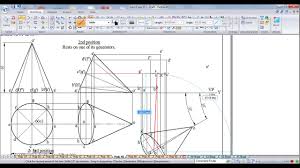
Uploaded on 2020-04-05 by DASARI ROOPA
Computer-aided design, or CAD, is now a fact of life in the design-construction process. The benefits to the construction industry already have been significant in several respects. These include reduced interferences, which are instances where the design of separate systems, such as electrical Page 70 Suggested Citation:"Technological Advances in the Construction Sector." National Research Council. 1988. Globalization of Technology: International Perspectives. Washington, DC: The National Academies Press. doi: 10.17226/1101.× Add a note to your bookmark conduit and high-voltage alternating current ducting, compete for the same physical space; better feedback to the design cycle on the impact of constructability enhancements, which are design factors intended to simplify construction and reduce job hours; and improved communication between the designer and supplier to ensure that the right component is available at the construction site when it is needed. CAD also has been a positive adjunct to the process of “fast-track” construction, an approach in which engineering and construction proceed concurrently. In this approach, construction might begin when 40 percent of the project’s design is completed, rather than waiting for the design to be 100 percent finished. CAD systems, which are used extensively in commercial and heavy industrial construction but have yet to prove